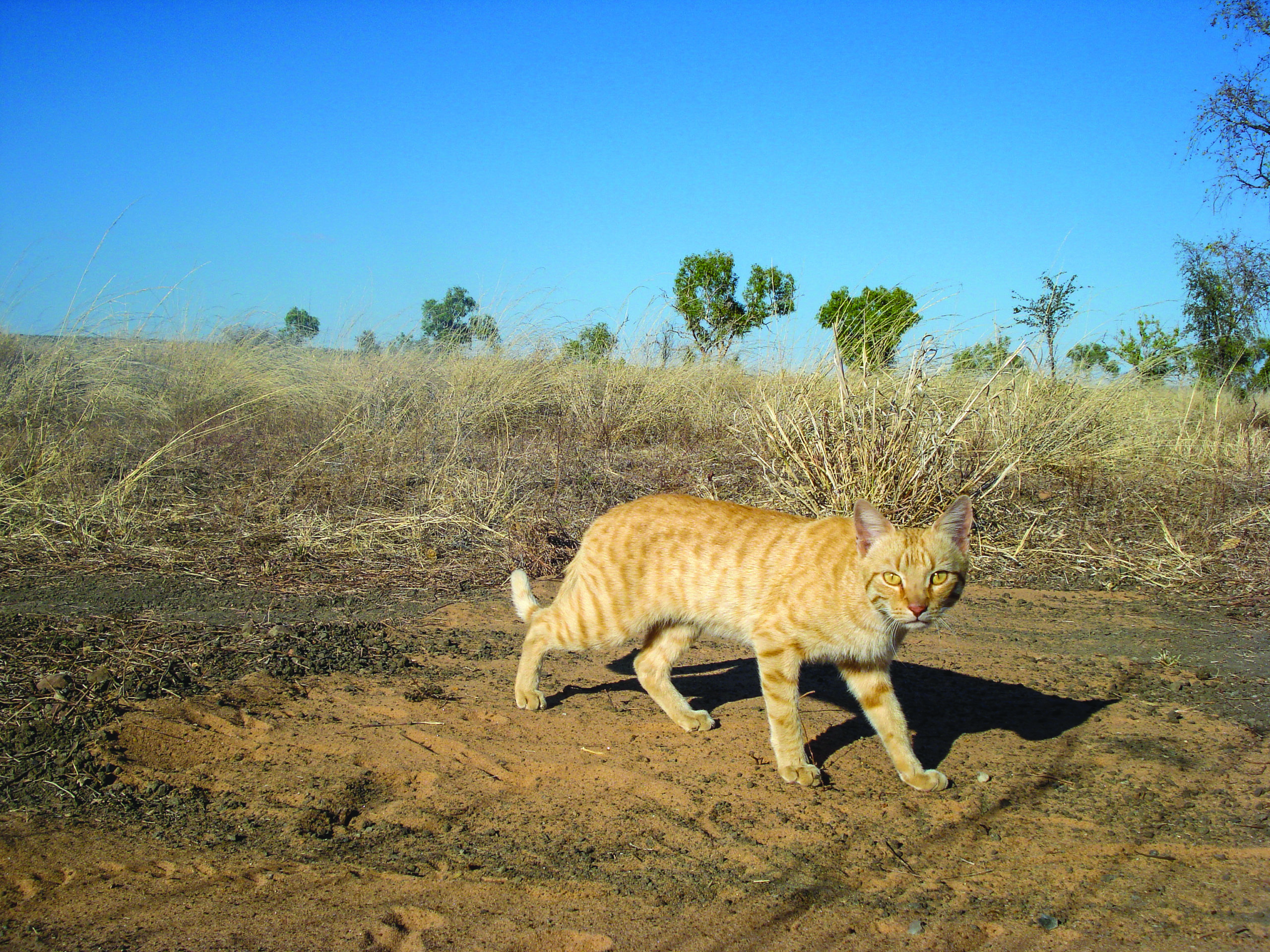By Dr John Kanowski, Chief Science Officer and Dr David Roshier, Senior Ecologist (Research)
From inception, AWC has committed resources to investigating and tackling the impacts of feral cats and foxes – the single greatest threat to Australia’s unique assemblage of small native mammals. Our strategy is clear:
For decades, AWC has invested and collaborated in a substantial program of research to better understand the ecology of feral predators so we can find effective methods for mitigating their impacts on wildlife. In the early 2000s, AWC worked with scientists from the Western Australian Government to eradicate cats from Faure Island, and to conduct research on the effectiveness of baiting techniques at Mt Gibson, prior to the establishment of a fenced area. In the early 2010s, AWC ecologists worked with land managers to reduce densities of cats and foxes, in a trial aiming to establish a population of Bridled Nailtail Wallabies outside the fenced area at Scotia.
At the same time, AWC ecologists and collaborators conducted substantial research on the ecology and impacts of feral cats in the Kimberley and Cape York Peninsula, making the link between fire patterns and feral cat behaviour for the first time. Cats were observed travelling long distances to hunt within fire scars resulting from late dry season wildfires. It was shown cats could hunt animals more easily in open areas than in dense vegetation. This major insight has informed our conservation management approach in northern Australia ever since: we now know maintaining ground cover by managing wildfires and feral herbivores can reduce the impacts of feral cats on wildlife and improve their chances for survival.
 AWC
AWC
Since 2015, AWC ecologists Drs David Roshier and Andrew Carter have undertaken major research on the ecology and management of feral cats and foxes, primarily at Scotia in western NSW, with related work in the Pilliga. This work has involved enlisting new technologies – remote cameras, lightweight GPS satellite collars and advanced statistical analysis – to assess the densities and movement patterns of cats and foxes, and their response to baiting. This work (now in press or being prepared for publication), has made exciting breakthroughs, including a technique to accurately estimate feral predator densities through newly developed survey methods that can be applied by conservation managers anywhere. The study revealed remarkable patterns of long-distance travel by a cohort of tracked feral cats. The most recent publications from this work have been based on analysis of high-frequency GPS tracking data.
One outcome is that the different types of dens, lairs and ‘lay-up sites’ used by feral predators in this landscape have been described: burrows dug into sandy soils, runs pushed under spinifex, piles of timber adjacent to roads and vegetation providing deep shade. Another finding is the data clearly show foxes will travel considerable distances for a drink of water during hot dry weather, which could help focus control efforts in this landscape.
Since 2019, we have been applying the methods developed at Scotia to help estimate the density of foxes and cats at Mt Gibson, while conducting a baiting program to measure feral predator response. The results will inform ‘outside the fence’ reintroductions of Brushtail Possum (Trichosurus vulpecula) and Chuditch (Western Quoll, Dasyurus geoffroii).
Longer-term, AWC is maintaining a collaboration with CSIRO around the potential application of gene-drive technology for effective, humane, landscape-scale control of feral cats. We are currently scoping the information requirements needed for deployment of such technology.
AWC science is leading the fight against feral predators: outcomes generated by our research into feral predators to date have been significant – from informing AWC’s land management actions to contributing to the national conversation about this issue. The next step is to substantially scale up AWC’s national feral cat ecology research program because, most importantly, the outcomes could give Australia’s wildlife a second chance at survival.
Read and download this full issue of Wildlife Matters here.
Please help AWC to scale up our response to feral predators